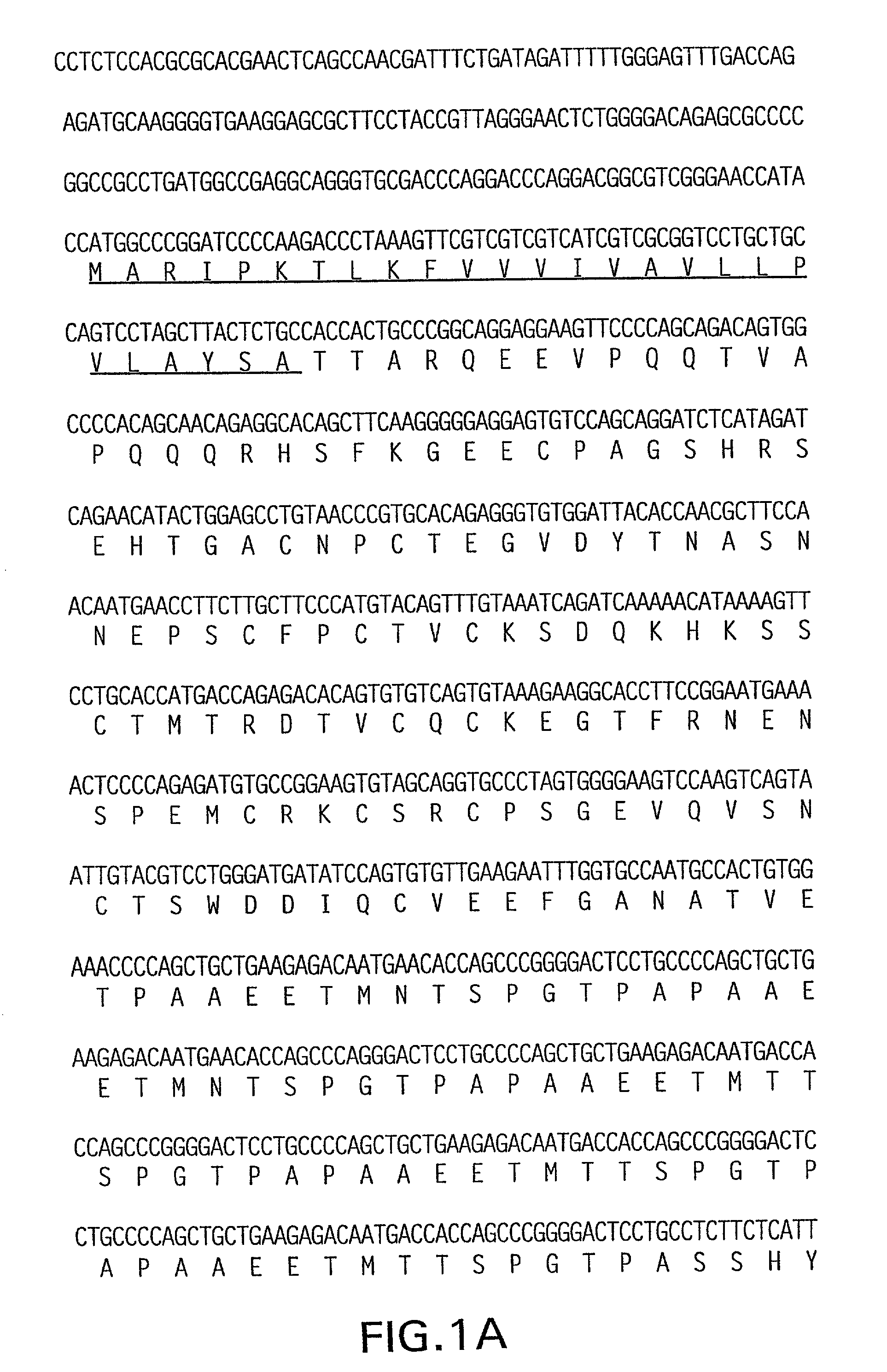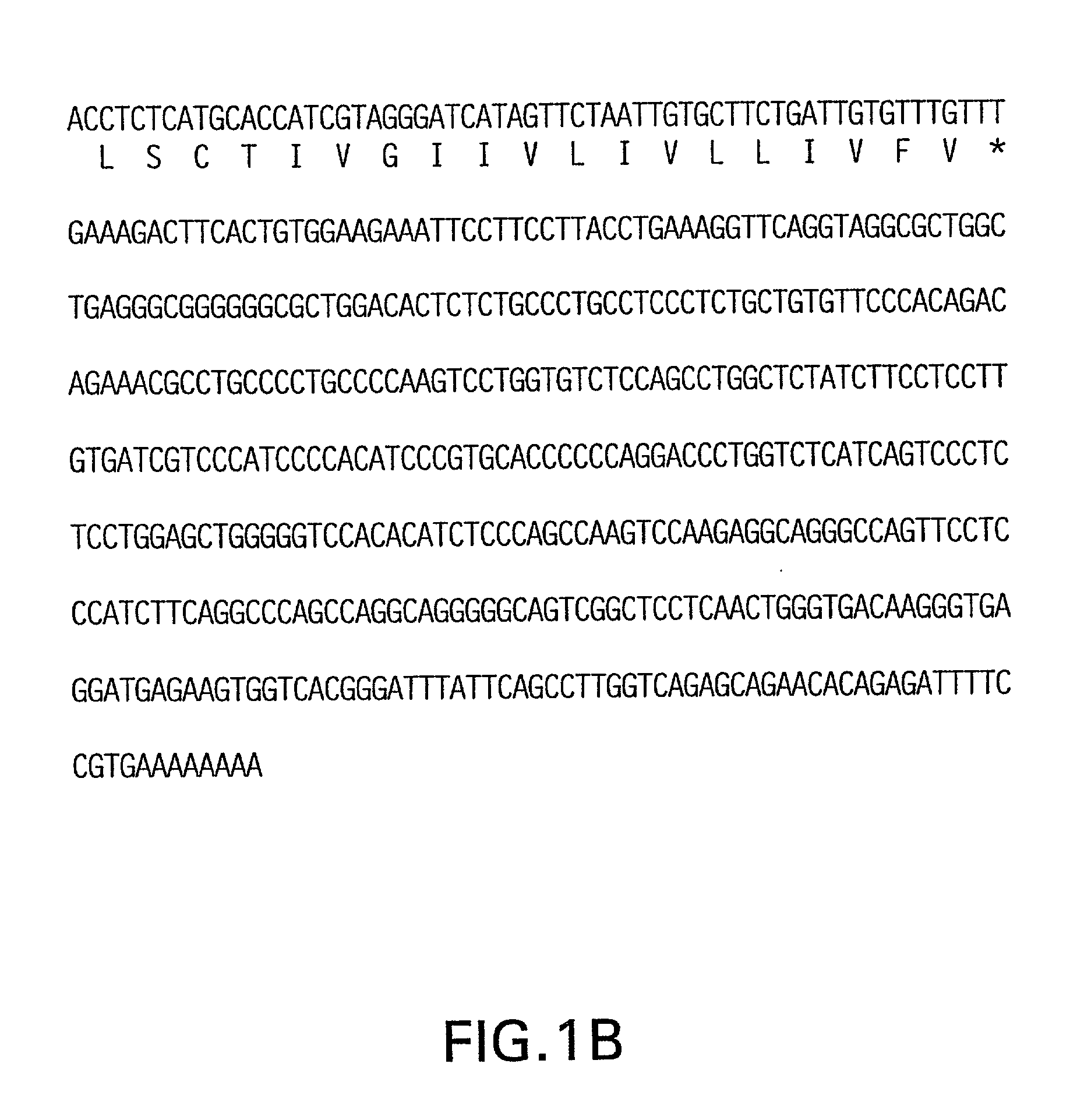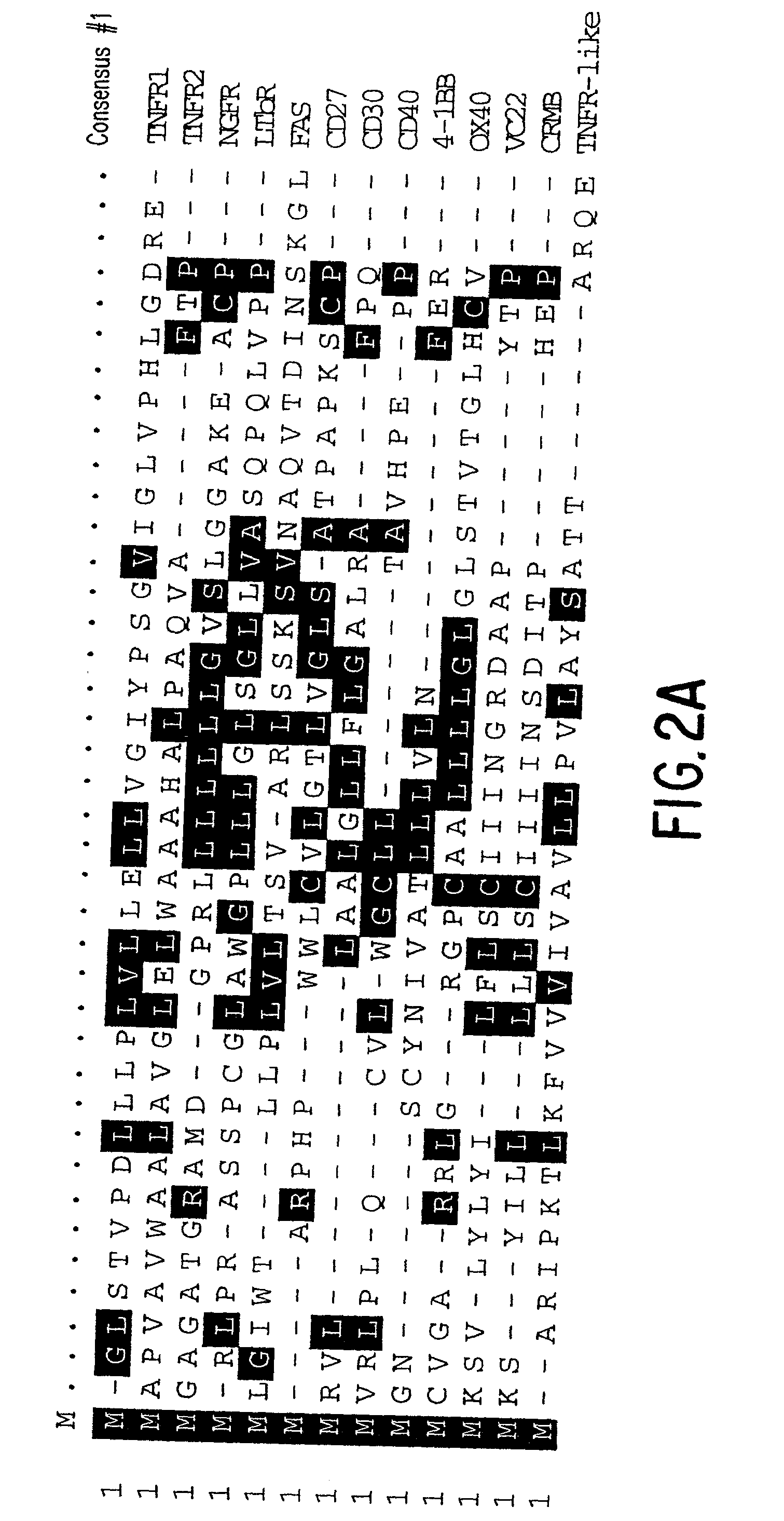Tumor necrosis factor receptor 5
a tumor necrosis factor and receptor technology, applied in the direction of antibody medical ingredients, peptide/protein ingredients, depsipeptides, etc., can solve the problems of loss of activity, method not always producing the same predicted cleavage point(s) for a given protein, and errors in the sequence determination
- Summary
- Abstract
- Description
- Claims
- Application Information
AI Technical Summary
Benefits of technology
Problems solved by technology
Method used
Image
Examples
example 1
Expression and Purification of the "His-tagged" Extracellular form of TRID in E. coli
[0184] The bacterial expression vector pQE9 (pD 10) is used for bacterial expression inthis example. (QIAGEN, Inc., 9259 Eton Avenue, Chatsworth, Calif., 91311). pQE9 encodes ampicillin antibiotic resistance ("Ampr") and contains a bacterial origin of replication ("ori"), an IPTG inducible promoter, a ribosome binding site ("RBS"), six codons encoding histidine residues that allow affinity purification using nickel-nitrilo-tri-acetic acid ("Ni-NTA") affinity resin sold by QIAGEN, Inc., supra, and suitable single restriction enzyme cleavage sites. These elements are arranged such that an inserted DNA fragment encoding a polypeptide expresses that polypeptide with the six His residues (i.e., a "6.times. His tag") covalently linked to the amino terminus of that polypeptide.
[0185] The DNA sequence encoding the desired portion of the TRID protein comprising the extracellular form of the TRID amino acid s...
example 2
Cloning and Expression of TRID in a Baculovirus Expression System
[0192] In this illustrative example, the plasmid shuttle vector pA2 is used to insert the cloned DNA encoding complete protein, including its naturally associated secretory signal (leader) sequence, into a baculovirus to express the mature TRID protein, using standard methods as described in Summers et al, A Manual of Methods for Baculovirus Vectors and Insect Cell Culture Procedures, Texas Agricultural Experimental Station Bulletin No. 1555 (1987). This expression vector contains the strong polyhedrin promoter of the Autographa californica nuclear polyhedrosis virus (AcMNPV) followed by convenient restriction sites such as BamHI, XbaI and Asp718. The polyadenylation site of the simian virus 40 ("SV40") is used for efficient polyadenylation. For easy selection of recombinant virus, the plasmid contains the beta-galactosidase gene from E. coli under control of a weak Drosophila promoter in the same orientation, followed...
example 3
Cloning and Expression of TRID in Mammalian Cells
[0202] A typical mammalian expression vector contains the promoter element, which mediates the initiation of transcription of mRNA, the protein coding sequence, and signals required for the termination of transcription and polyadenylation of the transcript. Additional elements include enhancers, Kozak sequences and intervening sequences flanked by donor and acceptor sites for RNA splicing. Highly efficient transcription can be achieved with the early and late promoters from SV40, the long terminal repeats (LTRs) from Retroviruses, e.g., RSV, HTLVI, HIVI and the early promoter of the cytomegalovirus (CMV). However, cellular elements can also be used (e.g., the human actin promoter). Suitable expression vectors for use in practicing the present invention include, for example, vectors such as pSVL and pMSG (Pharmacia, Uppsala, Sweden), pRSVcat (ATCC 37152), pSV2dhfr (ATCC 37146) and pBC12MI (ATCC 67109). Mammalian host cells that could b...
PUM
| Property | Measurement | Unit |
|---|---|---|
| pH | aaaaa | aaaaa |
| concentration | aaaaa | aaaaa |
| concentration | aaaaa | aaaaa |
Abstract
Description
Claims
Application Information
 Login to View More
Login to View More - R&D
- Intellectual Property
- Life Sciences
- Materials
- Tech Scout
- Unparalleled Data Quality
- Higher Quality Content
- 60% Fewer Hallucinations
Browse by: Latest US Patents, China's latest patents, Technical Efficacy Thesaurus, Application Domain, Technology Topic, Popular Technical Reports.
© 2025 PatSnap. All rights reserved.Legal|Privacy policy|Modern Slavery Act Transparency Statement|Sitemap|About US| Contact US: help@patsnap.com



